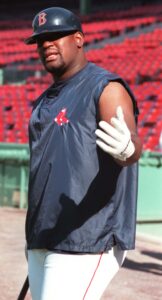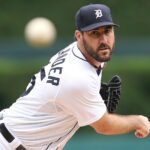 Baseball fans rejoice! Games are shorter, the pace is faster, and the dreaded “commercial break” is a fading memory thanks to the newly implemented pitch clock. But is this accelerated game a recipe for disaster on the pitcher’s mound?
Baseball fans rejoice! Games are shorter, the pace is faster, and the dreaded “commercial break” is a fading memory thanks to the newly implemented pitch clock. But is this accelerated game a recipe for disaster on the pitcher’s mound?
While shorter games are a win for restless fans, the rapid-fire pace could be a hidden fastball aimed at pitchers’ already fragile elbows. The MLB Players’ Association has voiced concerns that the clock forces pitchers to throw before they’re fully recovered, potentially leading to increased fatigue and a higher risk of injury
Is the clock the villain in this growing narrative of pitcher injuries? It’s hard to say definitively. While Major League Baseball claims early data shows no correlation between the clock and injuries , the season is young.
However, the sheer number of Tommy John surgeries, a procedure that repairs a torn ulnar collateral ligament (UCL), paints a concerning picture. Star pitchers like Spencer Strider and Shane Bieber are just the latest victims, joining a long list of arms lost to UCL tears. This epidemic predates the pitch clock, but could it be an aggravating factor?
The argument for the clock isn’t without merit. Proponents suggest shorter games actually reduce overall fatigue. But is this enough to offset the potential strain caused by less recovery time between pitches?
The answer might lie in a more nuanced approach. Perhaps the current clock settings need tweaking, allowing for additional time in specific situations, like high-pressure at-bats with a full count. Additionally, a renewed focus on mechanics and player development, ensuring proper throwing motion and building arm strength, can help young pitchers weather the rigors of the game.
Adding fuel to the fire, veteran pitcher Justin Verlander echoed similar concerns, calling the current rash of injuries a “pandemic” and attributing it to the emphasis on throwing “as hard as they possibly can” [CBS Sports: [invalid URL removed]]. This aligns with the concerns of the Players’ Association, suggesting the root cause might lie deeper than just the clock.
Former MVP Mo Vaughn chimes in, pointing the finger at analytics. He believes the focus on velocity and spin rate is causing pitchers to prioritize max effort on every pitch, potentially leading to imbalances and injuries.

Baseball needs a comprehensive solution, one that balances fan engagement with player health. The pitch clock is a step in the right direction for pace of play, but it can’t be the only answer. Let’s not sacrifice the careers of these talented athletes on the altar of speedier games. Let’s find a way to keep the clock ticking and the arms healthy, ensuring a vibrant, sustainable future for baseball.



